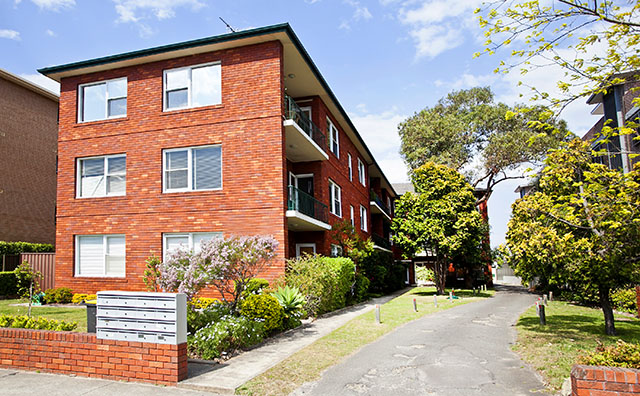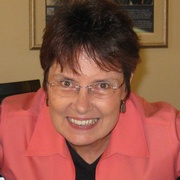Health Equity Framework in Practice: Communities Energized for Health
By Theresa Boschert, JD | June 12, 2018
Project Director, ETR
I’d like to tell you a story about a woman I’ll call Minnie. She’s a single mom with two pre-school aged children. She called my office one day asking for help about her housing situation.
Minnie and her children lived in a second floor apartment in a privately owned low rent housing unit. She was routinely sleeping in her car with her kids because her downstairs neighbor came home from work each day around 6 PM and began smoking. By nine o’clock, her children, one of whom had asthma, were coughing and having problems breathing.
The only way for them to get any rest at all was to move outside to the family car. Minnie had spoken with the neighbor and the building manager to no avail. I called the manager to advocate for Minnie. He offered to move her to another apartment. But there was no guarantee that another smoking tenant would not move in next door or below in the future. The cycle would begin again.
Eventually, we were able to help Minnie move to one of the few apartment complexes in the vicinity that had voluntarily adopted a building-wide no smoking policy. It was a relief for the time being. But there was no guarantee that the landlord might not change his mind about the policy, or sell the property to someone who would change the policy.
This is Quintessential Social Justice and Equity
This scene is all the more critical in publicly funded affordable housing, which is often “housing of last resort” for low-income tenants. This is one of the events that helped me see smoke-free multi-unit housing facilities as a quintessential issue of social justice and equity.
People who are economically fortunate enough to own a single-family home don’t have to be involuntarily exposed to their neighbors’ tobacco smoke. Likewise, those who can select an apartment or condominium complex with a no-smoking policy mandated by a local ordinance can enjoy a smoke-free living environment.
 On the other hand, people who make their home in publicly funded, multi-family housing facilities are routinely exposed to the carcinogens in their neighbors’ secondhand tobacco smoke. The U.S. Surgeon General’s office has declared that there is no safe level of exposure to SHS, yet the smoke seeps from apartment to apartment through windows, vents, electrical outlets and under doorways.
On the other hand, people who make their home in publicly funded, multi-family housing facilities are routinely exposed to the carcinogens in their neighbors’ secondhand tobacco smoke. The U.S. Surgeon General’s office has declared that there is no safe level of exposure to SHS, yet the smoke seeps from apartment to apartment through windows, vents, electrical outlets and under doorways.
The Federal Department of Housing and Urban Development (HUD) is introducing a smoke-free policy in its facilities later this summer, an encouraging move in the right direction. However, many low-income families and individuals are assisted by state, county or regional programs that do not have such policies in place.
Communities Energized for Health
This is one compelling reason that the California Department of Public Health Tobacco Control Bureau has funded Communities Energized for Health (CEH). This project is tasked with reducing exposure to secondhand tobacco smoke by means of policy adoption and implementation by local and regional legislative and/or regulatory authorities.
Communities Energized for Health offers an excellent model for some of the ways we can implement the principles and practices of ETR’s Health Equity Framework (see box). I’m excited about using this framework to analyze a project such as CEH, based on practical, community-based policy development. I believe that when we bring thoughtful and intentional focus to issues of health equity—and the systemic factors that contribute to health inequity—we have an opportunity to support profound and lasting change for the good.
ETR’s Health Equity Framework
The Health Equity Framework is a tool that helps us be more intentional and grounded about issues of health equity in all of our projects. It highlights four interconnected factors that influence health and advance, or impede, health equity. These factors are (1) systems of power; (2) relationships and networks; (3) individual factors; and (4) physiological pathways.
When health equity is present, individuals and communities have the personal agency and fair access they need to utilize resources and opportunities. These, in turn, bring about the best possible health outcomes in physical, emotional and social realms.
When health disparities exist, they reflect preventable differences in health outcomes related to social, economic and environmental conditions.
Better Health for 2,000 Households
Our project serves a population that includes over 2,000 low-income households. All receive assistance from the Yolo County Public Housing Authority (also known as Yolo County Housing) in the California communities of Woodland, West Sacramento, Winters, Esparto, and Knights Landing. The households are comprised of a mix of individuals and families—seniors, children, people with disabilities, married couples and unmarried individuals.

Some of these folks are employed, others are not. All must be U.S. citizens, and all fit income criteria established by the U.S. Department of Housing and Urban Development.
Public housing tenants anywhere in the nation experience a number of health inequities, including higher incidence of chronic obstructive pulmonary disease (COPD) and asthma in adults, and higher incidence of asthma among children. They are more likely to suffer from hypertension, heart disease, stroke and diabetes. In some studies these conditions affect as many as 50% of residents. All of these illnesses are adversely affected by tobacco use and exposure to secondhand tobacco smoke.
The goals of Communities Energized for Health—to support smoking cessation and prevent exposure to secondhand smoke—are critically important to this population.
Our Solution: Advocate For and Implement Smoke-Free Policies
The specific solution of Communities Energized for Health is to advocate for and implement smoke free policies. It seeks to have Yolo County Housing adopt and fairly implement a 100% non-smoking policy for all properties under its jurisdiction.
Within the Health Equity Framework, this fits under the element of Systems of Power. We reached out to policy makers to create fair access to resources (living space) and opportunities (not to suffer the negative effects of secondhand smoke), thereby enabling more equitable choices and healthier lifestyle options for residents.
I know that policy change can seem challenging. This solution set is not always addressed by community-based programs. But I’d like to encourage more of us as individuals, and when appropriate, as organizations, to employ advocacy strategies to influence policies.
Advocacy can be a slow process and one that involves considerable strategic planning. It requires thoughtfulness and sometimes great patience. It can also be empowering and transformative for the populations we serve.
Consider that at one time, the goal of smoke-free public housing was considered far-fetched by many. The idea of moving all tobacco smoking by public housing residents and their guests to designated outdoor smoking areas was seen as extreme. Today, through a number of efforts, including advocacy work that has influenced policy makers, it is becoming a reality across the nation.
ETR Resources on Intentional Advocacy
At ETR, we work on policy and advocacy issues in many of our areas of expertise. We have developed a number of free resources that can help organizations plan and practice advocacy. These are specifically focused on HIV prevention in the South, but the principles will adapt well across different regions and areas of focus:
- Intentional Advocacy in the South: Our Newest e-Learning Resource. This blog post describes and provides a link to the course.
- Intentional Advocacy in the South: Success Starts with Trust and Community. This blog post describes advocacy in practice with several HIV organizations and includes links to a series of advocacy-focused webinars.
How We Did It
- Cultivate relationships. We took the time to build meaningful, supportive relationships first and foremost with tenants and public housing staff. We also cultivated relationships with related stakeholders including policy makers, public figures such as local government officials, community influencers and other participants in housing programs. By showing up, speaking the truth and offering genuine support, we were able to build alliances with individuals and offices who were sometimes at odds with one another on these issues.

- Emphasize the science. We provided clear, accurate science-based data that supported these policy changes. We emphasized the most important points and put the concepts into clear language that non-scientists could easily understand. We organized talking points for our allies so they could speak to the issues with confidence and expertise.
- Gather stories. A story like Minnie’s—the lived experience of a real family—goes a long way to explain the reality of these issues. People remember stories more than they remember facts and data. By finding residents, care providers and advocates who could share their stories, we ensured that the stakeholders we contacted could not forget the importance of smoke-free housing.
What’s Happening Now
Recently, Communities Energized for Health persuaded Yolo County Housing leadership to actively and fairly implement the new HUD-mandated non-smoking policy for all their properties. With the help of their management staff, we conducted “town-hall” meetings with public housing tenants to discuss the policy and gain their buy-in. Through bilingual, on-site interactive presentations, Communities Energized for Health is working to gain the trust and engagement of tenants so that they “own” the policy and support its purpose.
We are pleased to have the support of Yolo County Housing and be seen as an ally in their efforts to provide safe, healthy housing. Janis Holt, staff member, said, “We view this as a quality of life improvement and as basic fairness for our residents. We are pleased to be getting out in front on this issue in order to be responsive to tenants who have been concerned for years about drifting secondhand cigarette smoke and about the fire danger posed by smoking inside our residential buildings.”
Theresa Boschert, JD, is a Project Director with ETR. She has a longstanding interest in public health advocacy and thrives on creative, practical, community-based policy development. She can be reached at theresa.boschert@etr.org





